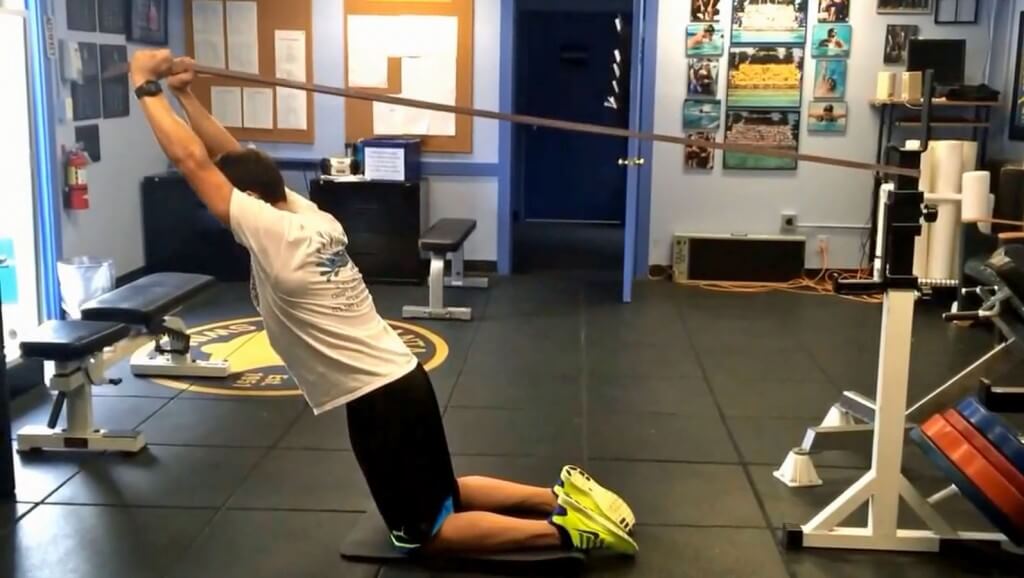Swimming Core Training: Strengthening Dolphin Kick Muscles

By Dr. G. John Mullen
Dr. Angelna Hibbs did a written interview for Swimming Science regarding her recent publication, Isolated core training improves sprint performance in national-level junior swimmers. This was the first study to analyze the effects of core training on swimming performance. As Dr. Hibbs wrote:
“Compared to the control group, the core training intervention group had a possibly large beneficial effect on 50-m swim time, this represented a 2% improvement on 50m swim time. Results also showed small-moderate improvements on specific core ability tests; such as the prone-bridge endurance test and straight-arm maximum strength pull-down test. The results showed moderate to large increases in peak EMG activity of the core musculature during isolated tests of maximal voluntary contraction of the core muscles analysed, this suggests that the individuals had gained strength in the core muscles as a result of the core training programme.”
These are supportive comments on swimming core training, something those engulfed in the swimming community have been suggesting for years. Unfortunately, this is the first true study on swimming core training and the effects on performance, despite the commonality of core training in sport. Dr. Hibbs went on to say:
“It needs to be functional and transferrable. Swimmers who use swiss gym balls to do core training are not performing functional movements. Equally static exercises have a limited functionality. The exercises need to recruit and train the muscles in a similar direction and intensity to what they will be doing in the pool.
A lot of the core training is also done after the main swim set when individuals are fatigued and tired. This will not be as effective as if it was done before when the muscles are fresh and able to maintain good posture during the exercises and recruit the muscles as they should during the exercises.”
Based on her recommendations, here is a novel high-level core exercise integrating the legs, core, and arms in a similar motion as an underwater dolphin kick (no, it isn’t that close biomechanically, but similar) [also check out 3 core training mistakes that swimmers make].
Purpose:
Generating power through the legs with a stable core and upper body allows transference of the energy for dolphin kicking. This exercise requires eccentric quadriceps strength, eccentric rectus abominus strength, concentric rectus abdominus strength, and isometric scapular stability. For more information on these muscles, check out swimming core training.
Directions:
Securely set up a band at head height while kneeling. Next, kneel on a mat and face away from the band. Brace your abdominals and maximally squeeze your glutes. Next, lean back, then raise your arms overhead and slowly return upright. Lower the arms, then repeat. Do not let your body arch.
Eccentric Fallbacks With Pallof Press




Carlos R Terreforte Garcia
JinWei Lee
Leonard Ng and Demas Lim what do you think?
Cheryl Blenk what do you think?
Aidan and Elyse
Kaitlin Burton
Mahmoud Osama Os
you know it
you know it
Yes
Deborah von Wartburg
Ja mann züriseeüberquerung mir chömed
jawohl! bohne & naddl vereint…. who is nessie hahaha
Nessie is sooo realia. Ezt chömed mir mann
Max Maximilian
Claudio Castro Leon
Ariel Xu
Jeroen Dellebeke
Gracie Anderson
Gabby Burdess
Wow, think I would need a very stretchy band for this!!!!!
Hannah Sophia Rhonda